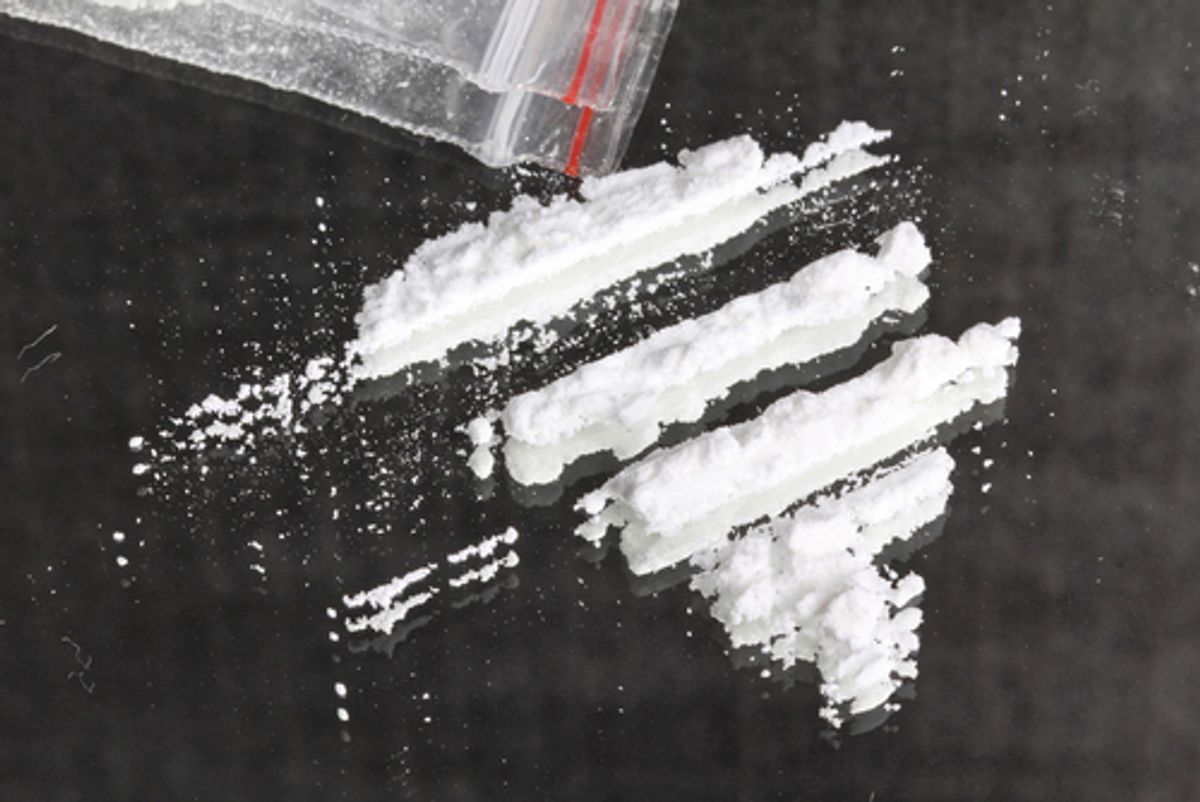 LIMA, Peru — Peru is on the brink of officially confirming its unwanted status as the world’s top producer of cocaine and other illegal coca plant derivatives.
LIMA, Peru — Peru is on the brink of officially confirming its unwanted status as the world’s top producer of cocaine and other illegal coca plant derivatives.
In recent weeks, the United Nations Office on Drugs and Crime (UNODC) has released the 2012 production statistics for coca, the Andean bush from which the drugs are made, for Colombia and Bolivia.
Both show sharp drops, which Peru is not expected to match when its figures are eventually published.
According to UNODC, Colombia’s total area dedicated to coca cultivation in 2012 was 48,000 hectares (119,000 acres), 25 percent less than the 2011 number of 64,000 hectares.
Meanwhile, Bolivia’s equivalent figure fell by 7 percent to 25,000 hectares, the agency has confirmed.
UNODC is expected to release the Peru figures any day now but the country’s anti-drug czar, Carmen Masias, told GlobalPost that, although she could not give precise details, they would not show “big changes.”
With Peru already vying with Colombia in 2011 — it actually was growing 400 hectares of coca more than its neighbor then, although it is thought to have produced less drugs — that means this country is now almost certainly the world’s top source of coca for the manufacture of illegal narcotics.
But Masias, who heads Devida, the government’s anti-drug agency, insists that Peruvian law enforcement is now close to a breakthrough in its battle with the drug cartels.
In particular, she cited how police and the armed forces destroyed 14,400 hectares of coca in 2012 but are on course to wipe out 22,000 hectares this year.
Even allowing for the drug trade’s ability to re-sow coca in new areas to partially make up for lost production, that should, Masias predicts, cut Peru’s total coca cultivation around 6,000 hectares by the end of 2013.
“We are only recently starting to really reduce the area of coca crops,” Masias said. “We have a global strategy, with very clear goals, very clear indicators, and that is what we are intent on achieving.”
Nevertheless, Masias’ predecessor as Devida executive president, Ricardo Soberon, now a trenchant critic of the government’s counter-narcotics policies, is not holding his breath.
“These figures are a clear indication the government is making incorrect decisions,” said Soberon, who was squeezed out of his job, apparently under pressure from Washington, in 2011, for allegedly being sympathetic to the impoverished, small farmers who grow most of Peru’s coca.
Soberon, who now runs the Lima-based Center for Research into Drugs and Human Rights, or CIDDH, cites a litany of errors by the administration of President Ollanta Humala that has allowed the drug trade to flourish here.
These include the failure to seriously go after financial flows — including the cartels' alleged use of Peru’s construction boom to launder profits — emanating from cocaine trafficking or to regulate the market for the chemical ingredients used to make the drugs.
But one of the biggest blunders, Soberon believes, is the continued policy of forced eradication of coca crops, usually with devastating consequences for the growers, who rely on the income from selling coca to supplement their near-subsistence lifestyles.
Instead, he champions the Bolivian approach — which appears to be bearing results — of dialogue with coca growers to persuade them to voluntarily switch to alternative crops such as cacao or coffee.
Masias responded: “Forced eradication can sound harsh, but the evidence tells us that people do not eradicate coca voluntarily.”
However, she also stresses that Devida coordinates development support for coca-growing regions.
Colombia’s success relative to Peru means that the debate over forced eradication is far from clear cut. Bogota’s strategy is also based on forced eradication, but combines vastly greater resources dedicated to fighting the drug trade.
But one key difference between Colombia and Peru may be the latter’s “rampant” corruption, among the worst in Latin America, according to Soberon, undermining law enforcement. Traffickers here are believed to routinely pay off police and soldiers of all ranks who are supposed to be hunting them down.
“Humala [a former army officer] just trusts the military but the military want to keep the business going,” Soberon said. “You need more than that to tackle this complex problem.”
The corruption even appears to have reached the highest levels of government.
Previous President Alan Garcia, a leading candidate for the 2016 presidential elections, is now embroiled in the “narco pardons” scandal.
Although he has yet to be accused directly, personal aides during his 2006-2011 presidency are now known to have freed dozens of drug convicts — including cartel leaders — by selling them pardons totaling millions of dollars.
While Colombian cocaine usually heads to the streets of the world’s No. 1 market, the United States, most of that from Peru and Bolivia is destined to be snorted, smoked or injected in South America, Europe and Asia.
Much of it is consumed in slums in Brazil — now the world’s No. 2 market for coca-derived narcotics — and Argentina as coca paste, a cheap, impure, partially processed and highly addictive form of cocaine known in South America as “basuco” or “paco.”
And with no let up in demand in sight, Peru now has its work cut out to slash its coca harvest — and provide real incentives for growers to switch to other crops.



Shares